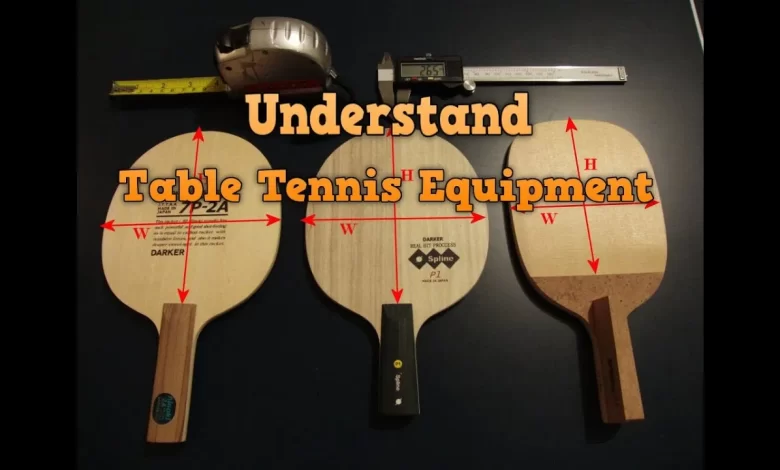Choosing Your Table Tennis Paddle: What to Look For

Choosing the right table tennis paddle is a crucial decision that impacts players of all levels. Your playing style, preferences, and skill level are key factors to consider when purchasing a paddle. In this article, we’ll explore the key considerations when choosing a ping pong paddle to help you make an informed decision.

Table of Contents
1. Blade
Choosing the perfect blade is crucial for your performance. Most blades are made of wood and are covered by rubber. There are also titanium blades and carbon fibre blades available.
Hardwood Blades:
These are the most common and traditional. They are more affordable than carbon or composite blades and provide better control and feel.
Carbon/Composite Blades:
These may offer more power but are pricier.
Blade size and shape have a significant impact on the speed and control of the ball. Many serious and professional table tennis players purchase the blade and rubber separately to customize their paddles based on their style of play.
2. Handle and Grip Style
The table tennis handle is a critical component with a significant impact on a player’s performance and comfort. There are three types of handle shapes:
Handle Styles
Straight Handle:
The most basic and traditional form, often used by players who use a penhold grip.
Flared Handle:
Used by players who use a shakehand grip.
Anatomic Handle:
Preferred by players who play for extended periods.
Grip Styles
There are two main grip styles in table tennis:
Shakehand:
It has a longer handle and can be harder to control, suitable for both offence and defence.
Penhold:
Featuring a shorter handle, it’s easier to control and is typically used for offensive play. There are two types of penhold grip styles: Chinese and Japanese.
Choosing the right handle involves personal preferences and aligning it with your style of play.
3. Number of Plies
Table tennis paddles are made with different levels of ply, ranging from 3-7 plies of wood. The thickness of the paddle determines the hardness of the surface. Both thicker and thinner paddles have their pros and cons.
Thicker Paddles
Enable faster gameplay but may reduce control due to the rebound of the rubber.
Thinner Paddles
Offer increased control and slower gameplay.
4. The Rubber
The thickness of the rubber can significantly affect your game performance when using the best table tennis rackets. Two types of rubber thickness exist:
Types of Sponges
Thin Sponge (less than 2.0mm):
Offers better control but less speed.
Thick Sponge (2.1mm and above):
Provides more spin but less control.
Types of Rubber
There are different types of rubber, including:
Ordinary Pimpled Rubber:
This can be natural or synthetic with evenly distributed pimples or pips.
Sandwich Rubber:
Features a single layer of cellular rubber/sponge covered with a single layer of ordinary pimpled rubber.
Two-Faced Rubber:
Found in paddles with two rubber coatings on each side of the table tennis blade.
5. Weight
The weight of the paddle can significantly impact your play. A heavier paddle offers more power and stability, while a lighter one provides more control and speed.
6. Budget
Table Tennis paddles are available at different price ranges. Be specific about your needs and budget. Beginners can opt for low-cost table tennis paddles for practice, while professional players can choose high-quality paddles that may cost several hundred dollars.
In conclusion, selecting the best table tennis racket is essential for improving your game performance. We hope that this article has provided you with valuable insights when purchasing table tennis paddles.